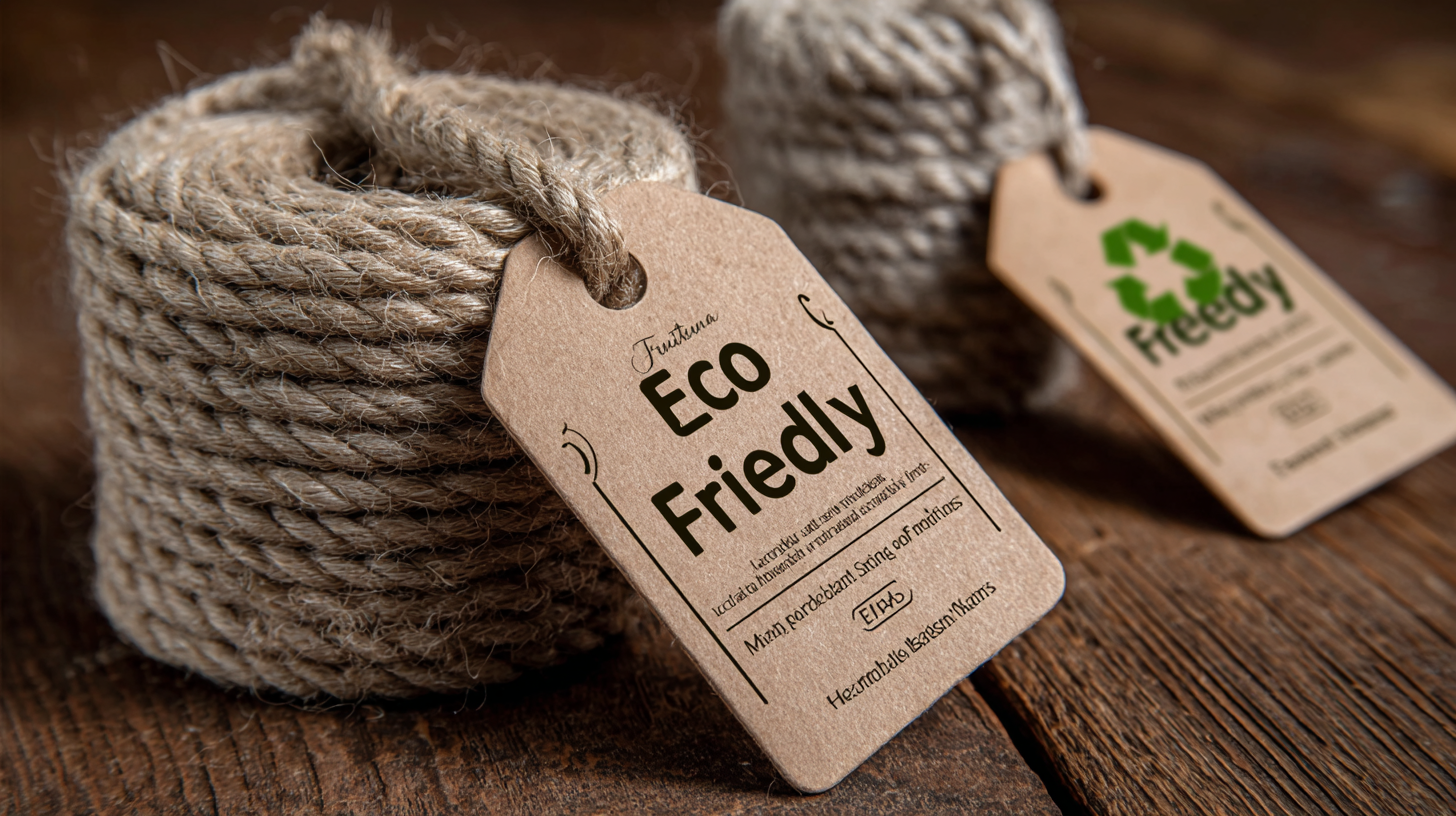How to Maximize After-Sales Support and Minimize Repair Costs for Eco-Friendly Product Labels
In today's environmentally conscious market, the demand for Eco Friendly Product Labels is surging, as more consumers seek sustainable alternatives that reflect their values. According to a report by the Global Sustainability Institute, 66% of consumers are willing to pay more for products that are environmentally friendly, and businesses are increasingly recognizing the importance of minimizing their ecological footprint. However, the challenges of after-sales support and repair costs often hinder companies from maximizing their sustainability efforts. By implementing robust after-sales strategies tailored to Eco Friendly Product Labels, businesses can not only enhance customer satisfaction but also reduce operational expenses associated with repairs. This blog will explore the benefits of effective after-sales support and provide actionable insights on how to integrate eco-friendly practices into every stage of the product lifecycle, ultimately leading to a win-win scenario for both the environment and the company's bottom line.

Strategies for Enhancing After-Sales Support for Eco-Friendly Products
 Enhancing after-sales support for eco-friendly products requires a strategic approach that prioritizes customer satisfaction and sustainability. One effective strategy is to provide comprehensive product education. This involves offering detailed guides and tutorials that help customers understand the proper use, maintenance, and disposal of eco-friendly products. By empowering consumers with knowledge, companies can reduce the likelihood of misuse or damage, ultimately minimizing repair costs and promoting product longevity.
Enhancing after-sales support for eco-friendly products requires a strategic approach that prioritizes customer satisfaction and sustainability. One effective strategy is to provide comprehensive product education. This involves offering detailed guides and tutorials that help customers understand the proper use, maintenance, and disposal of eco-friendly products. By empowering consumers with knowledge, companies can reduce the likelihood of misuse or damage, ultimately minimizing repair costs and promoting product longevity.
Another key strategy is to establish a responsive and efficient customer service system. This can be achieved by leveraging digital tools such as chatbots and online support portals to provide quick assistance. Implementing a follow-up system to gather feedback after purchase can also be invaluable. This not only helps identify common issues that may arise but also demonstrates a brand's commitment to customer care. By actively engaging with consumers and addressing their concerns, businesses can build trust and foster long-term relationships, paving the way for repeat purchases and customer loyalty in the eco-conscious market.
Innovative Technologies to Reduce Repair Costs in Sustainable Product Lines
In the increasingly competitive landscape of sustainable consumer goods, innovative technologies play a pivotal role in minimizing repair costs associated with eco-friendly product lines. The Global Sustainability Report (2023) highlights that organizations investing in smart manufacturing technologies have reported a 25% reduction in repair costs annually. By integrating predictive maintenance through IoT devices, companies can identify potential product failures before they occur, leading to fewer repairs and increased customer satisfaction.
Furthermore, advancements in materials science have resulted in the development of more durable and sustainable products. According to a report by the Eco-Innovation Initiative, 70% of firms that adopted greener materials experienced a significant decrease in lifecycle repair costs, showcasing the financial benefits of environmental stewardship. Employing such innovative practices, businesses not only reduce their environmental impact but also enhance their profitability by minimizing post-sale support expenses. Emphasizing these sustainable practices can help brands strengthen their market position while contributing positively to the planet.
Building a Customer-Centric Approach to After-Sales Services
Building a customer-centric approach to after-sales services is crucial for maximizing customer satisfaction and minimizing repair costs, especially in the eco-friendly product sector. Focusing on the needs and preferences of customers can lead to improved service models and enhanced loyalty. Companies should prioritize clear communication and accessibility. Providing detailed guidance and support post-purchase cultivates trust and ensures customers feel valued.
Tips: Establishing a robust feedback loop is essential. Regularly soliciting customer opinions on their product experiences not only helps in improving the product but also shows customers that their voices matter. Moreover, tailoring after-sales support by offering personalized assistance can significantly enhance customer relations.
Additionally, investing in training for support staff is vital. Knowledgeable representatives can effectively resolve inquiries and issues, reducing the chances of costly repairs. Empowering customers with DIY support materials, such as informative videos and user manuals, can further minimize repair costs while fostering a sense of independence. By creating a comprehensive after-sales strategy that emphasizes customer engagement, businesses can achieve sustainability and long-term success.
Leveraging Data Analytics for Efficient Handling of Eco-Friendly Product Repairs
In today's environmentally conscious market, eco-friendly product labels are gaining popularity, but they also come with unique challenges in after-sales support. To efficiently handle repairs and minimize costs, leveraging data analytics is becoming an invaluable strategy. By collecting and analyzing data on product performance, customer feedback, and common repair issues, businesses can identify trends and proactively address potential problems. This not only helps in improving product quality but also enhances customer satisfaction by reducing the frequency of repairs needed.
Moreover, data analytics can streamline the repair process itself. By utilizing predictive analytics, companies can estimate repair needs and stock necessary parts in advance, reducing downtime and associated costs. Implementing a robust data management system allows for real-time tracking of repair cases, ensuring timely interventions. This proactive approach not only cuts costs but also supports the longevity of eco-friendly products, aligning with the sustainability goals that resonate with environmentally aware consumers.

Future Trends in Eco-Friendly Labeling and Their Impact on Support Services
In recent years, the shift towards eco-friendly labeling has accelerated, impacting not only product visibility but also after-sales support services. A report from Smithers Pira indicates that the global market for sustainable packaging, including eco-friendly labels, will reach $400 billion by 2027, highlighting the growing consumer demand for environmentally responsible products. This trend necessitates a stronger focus on supporting customers post-purchase, as consumers increasingly seek brands that align with their values.
One effective strategy to enhance after-sales support is to invest in educational resources for customers. Providing clear, accessible information about the benefits and proper use of eco-friendly labels can significantly improve customer satisfaction. For instance, creating short tutorial videos or FAQs can help customers understand the product’s lifecycle and recycling options, reducing the potential for misunderstandings or misuse.
Additionally, utilizing predictive analytics can aid brands in minimizing repair costs associated with mismanaged eco-labels. By analyzing customer feedback and identifying common issues, businesses can proactively address concerns before they escalate. This not only minimizes repair needs but also fosters a loyal customer base. Remember, proactive communication is key; keep customers informed about label maintenance practices and the environmental impacts of their choices.
